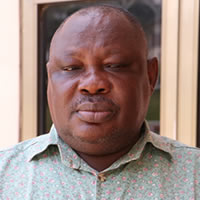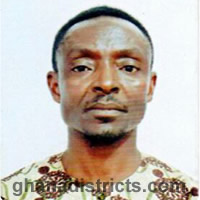Study revealed that there are 93 Kindergarten / nursery institutions comprising 27 privates and 66 publics. These institutions are operating mostly in the capital - Nkawkaw. The number has been found to be inadequate to absorb all the children in this bracket.
The primary school in the municipality number 107 comprising 25 privates and 82 public. The total enrolment in these schools is 17,377. These schools are manned by 533 teachers made up of 110 untrained and 423 trained. The teacher pupil ratio is 1: 28. This ratio compares favourably with the national ratio of 1:35 The Junior Secondary Schools (J.S.S.) the number 59 comprising 15 privates and 44 publics. The total population of these schools is 6,942. About 47.8% are girls while 52.2% are boys.
This implies that there is the need for intensification of girl child education at this level. These schools are manned by 382 teachers.The teacher / student ratio is 1: 17. There are 2 Senior Secondary Schools 1 public and the other private with total population of 1493 these schools are manned by 61 Teachers. The teacher 1 student ratio is 1:17 There are 3 private commercial schools made of total population of 346 manned by 13 teachers.
It can be noted from the table above that public owned schools at all levels are more than the private schools . Not surprising though, pupils in private schools have poor infrastructure than their private school counterparts in the municipality. The problems of inadequate and poor quality infrastructure in the public schools can be found throughout the municipality.
The situation in the urban areas of the assembly that is, Nkawkaw and Asuboni Rails Dome, is compounded by overcrowding with an average of about 100 pupils per class. To be specific, at Nsuta D/A primary there are as many as 75 pupils in a class. This means the number of classes exceed the number of classrooms. It is obvious that overcrowding limits or minimizes children’s enthusiasm to play because movement is highly restricted. Also the lack of piay facilities, workshops, sanitation and library facilities, is another problem in the public basic schools.
The afore-mentioned situation promotes the tendency of negating the life experience of many children especially the poor who use the public facilities. This situation further stunts their growth potential instead of recognizing and developing their talents and skills that are relevant to their lives. Parents grudgingly enroll their children because the schools are of such poor quality that, they do not consider them worthy of use.
This situation is affecting the quality of education and an increasing concern about the competence of our public schools. Unlike the situation in the urban and peri-urban areas enrolment is low in the rural areas. The same trend applies to staffing. The introduction of the CAPITATION grant has however improved the situation in some areas. Asboni no 3 is one of the rural communities however need serious attention to improve enrolment.
Enrolment by gender and circuit respectively. One tertiary institution exists in the municipality. That is the Holy F Nursing Training Collage From the foregoing, development issues in the sector that needs to be addressed include:
• Rehabilitation of schools
• Enrolment drive
• Provision of education infrastructure
• Provision of school furniture
• Provision of teachers Quarters in the rural areas
• Provision of early childhood development centers among others
Date Created : 11/26/2017 1:35:06 PM






 facebook
facebook twitter
twitter Youtube
Youtube TOLL FREE 0800 430 430
TOLL FREE 0800 430 430 +233 593 831 280
+233 593 831 280 GPS: GE-231-4383
GPS: GE-231-4383 info@ghanadistricts.com
info@ghanadistricts.com Box GP1044, Accra, Ghana
Box GP1044, Accra, Ghana